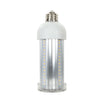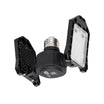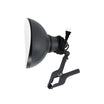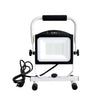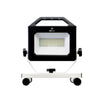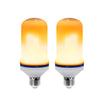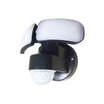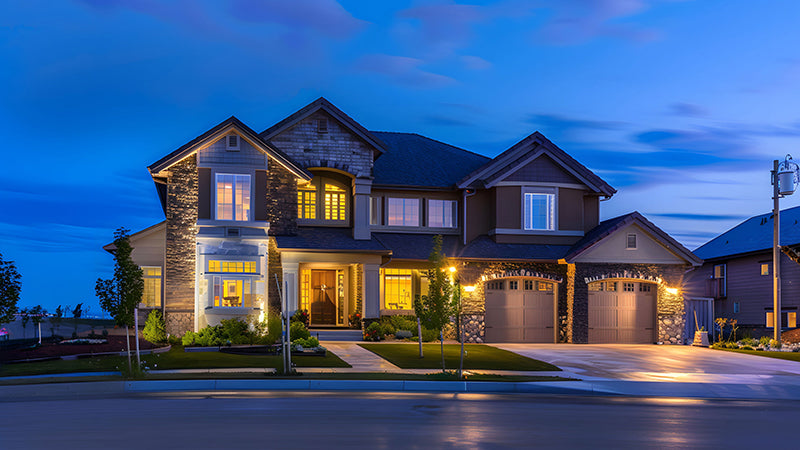Lighting shapes the functionality and ambiance of a home, office, store, and much more. From highlighting an entrance to covering a relaxing space in a low, soothing light, lighting alone can change the mood of a room. Beyond the brightness and style of a light, one often overlooked detail is the color temperature that is produced by a bulb or fixture.
The color temperature of light is measured in Kelvins (K), and this scale ranges from warmer orange and yellow tones to much colder blue tones. Each tone along this scale will have a different effect on the shape that it is in. Combining these tones with the use case of each space will help elevate the functionality and comfort you will get from your space.
Let's go over the major color temperatures and what rooms you can best utilize them in.
1. Living Rooms – 2700K to 3000K (Warm)
The living room is your go-to space for relaxing, entertaining, and unwinding. A warm white light (2700K–3000K) creates a cozy and inviting atmosphere, ideal for reading, conversation, or movie nights. Think of the soft glow of incandescent lighting—it’s warm, gentle, and soothing.
Best bulb type: LED bulbs labeled "Warm White" or "Soft White".
2. Kitchen – 3000K to 4000K (Neutral White to Cool White)
The kitchen demands clarity and focus. For prepping meals and cleaning up, lighting in the 3000K to 4000K range offers a crisp and clean feel without being too harsh. This temperature helps bring out the natural colors of food and makes surfaces look more defined.
Tip: Use under-cabinet lighting with neutral white LEDs to reduce shadows and improve visibility.
3. Bathroom – 3500K to 4000K (Neutral White)
Bathroom lighting should be bright enough for grooming tasks but not overly clinical. A neutral white light (around 3500K to 4000K) mimics daylight and provides a flattering reflection in mirrors—great for shaving or applying makeup.
Consider: Lighted mirrors or vanity lights with adjustable temperatures for maximum flexibility.
4. Bedroom – 2700K (Warm White)
Bedrooms benefit from low, warm lighting to help your body wind down. A soft warm white (around 2700K) is perfect for creating a relaxing sleep environment. Avoid cool or daylight bulbs, as they can disrupt your circadian rhythm and make falling asleep more difficult.
Pro tip: Use dimmable lights or smart bulbs to gradually reduce brightness in the evening.
5. Home Office – 4000K to 5000K (Cool White to Daylight)
Productivity thrives under cool white or daylight temperatures (4000K to 5000K). This type of lighting boosts alertness, reduces eye strain, and mimics natural daylight—making it ideal for work or study environments.
Add-ons: Combine overhead lighting with desk lamps for layered illumination.
6. Dining Room – 2700K to 3000K (Warm White)
Like the living room, the dining room benefits from warm lighting to enhance the enjoyment of food and conversation. A 2700K to 3000K bulb softens the atmosphere and flatters both food and people.
Style idea: Consider pendant lights or chandeliers with dimmable warm bulbs for a cozy, elegant setting.
7. Hallways and Entryways – 3000K (Warm to Neutral White)
Transitional areas should feel inviting yet functional. A 3000K neutral white works well to keep the space well-lit without being too warm or cold. This level of brightness provides enough visibility without stealing the spotlight from other design elements.

